Expert Treatment for Chronic Muscle Tension, Joint Stiffness, and Restricted Movement
Tightness and discomfort describe the persistent sensation of muscle tension, joint stiffness, and restricted movement that interfere with normal activity and comfort. Unlike acute pain from specific injuries, this chronic tightness creates a constant awareness of your body’s limitations—whether it’s a stiff neck that won’t turn, tight shoulders that ache by midday, or lower back muscles that feel perpetually locked.At VeriSpine Joint Centers, we understand that living with chronic muscle tightness and joint discomfort isn’t just uncomfortable—it’s exhausting. Our metro Atlanta specialists have spent over 30 years identifying the root causes of persistent tension and developing comprehensive treatment protocols that provide lasting relief, not temporary fixes.
You’re Not Imagining It: Chronic tightness is a real condition with identifiable causes. Many patients tell us they’ve been dismissed or told to “just stretch more,” but persistent muscle tension and joint stiffness signal underlying musculoskeletal dysfunction that requires proper diagnosis and targeted treatment. We take your discomfort seriously.
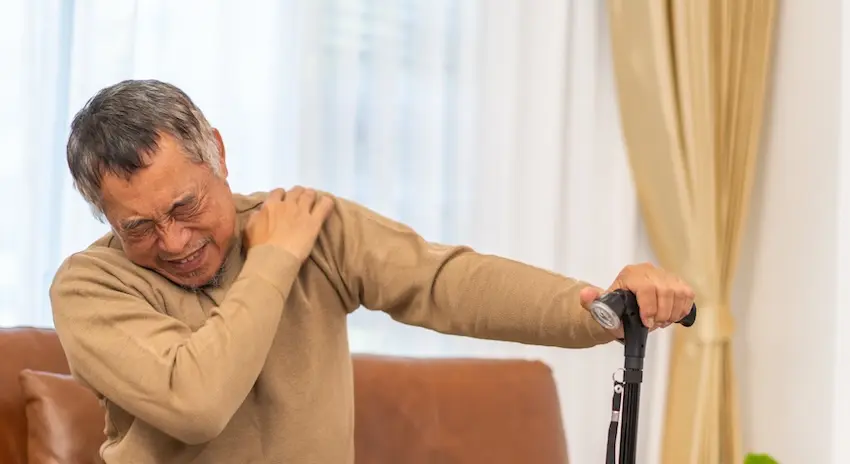
Understanding Muscle Tightness and Joint Discomfort
Tightness and discomfort manifest differently than sharp, acute pain. Instead of sudden onset from a specific injury, this condition develops gradually—often so slowly you can’t pinpoint when it started. You might wake up with a stiff neck that never fully loosens, or notice your hips feel tight every time you stand after sitting.
The sensation varies from person to person. Some describe it as muscles that feel “locked up” or “knotted.” Others experience a dull, constant ache accompanied by restricted range of motion. Many patients report their muscles feel hard to the touch, almost rigid, despite attempts to relax. Joint stiffness creates a similar sensation—movement feels restricted, as if something is mechanically preventing full motion.
The tightness in my shoulders was so constant I forgot what normal felt like. I thought everyone lived with that level of tension until treatment showed me otherwise.” — VeriSpine Patient
The Physiology Behind Persistent Tension
Muscle tightness occurs when muscle fibers remain in a contracted state rather than fully relaxing. This sustained contraction restricts blood flow, accumulates metabolic waste products, and creates localized inflammation—perpetuating the discomfort cycle. Over time, these chronically tight muscles develop trigger points: hyperirritable spots that refer pain to other areas and maintain the tightness pattern.
Joint discomfort typically stems from inflammation, cartilage breakdown, or altered joint mechanics. When joints don’t move smoothly through their full range, surrounding muscles compensate by tightening protectively. This creates a feedback loop where joint stiffness causes muscle tension, which further restricts joint movement, which intensifies muscle guarding.
Your nervous system plays a crucial role. Chronic stress, poor posture, repetitive movements, and previous injuries create learned tension patterns. Your brain essentially “forgets” how to fully relax certain muscle groups, maintaining baseline tension even during rest. This neurological component explains why stretching alone often provides only temporary relief—the nervous system quickly reestablishes the familiar tension pattern.
Common Patterns of Tightness and Where They Occur
While tightness can affect any muscle or joint, certain areas consistently demonstrate chronic tension patterns. Recognizing your specific pattern helps identify the underlying cause:
Neck and Upper Shoulder Tightness
Constant tension in the trapezius muscles, difficulty turning your head fully, stiffness that worsens with desk work or driving. Often accompanied by headaches and upper back discomfort.
Lower Back Stiffness
Lumbar muscles that feel rigid, especially after sitting or first thing in the morning. Limited forward bending, difficulty finding comfortable positions, and a sense of needing to “crack” your back repeatedly.
Hip and Buttock Tension
Deep discomfort in hip flexors or gluteal muscles, tightness when standing from seated positions, restricted rotation when walking or climbing stairs. Common in people with sedentary jobs.
Shoulder and Rotator Cuff Stiffness
Limited overhead reaching, tightness with specific movements, awareness of shoulder position even at rest. May interfere with dressing, sleeping, or work activities requiring arm elevation.
Mid-Back Tightness
Thoracic spine rigidity, difficulty taking deep breaths, sensation of a band around your ribcage. Often develops with prolonged sitting and rounded shoulder posture.
Leg and Calf Tension
Chronic tightness in hamstrings, calves, or IT bands that never fully release despite stretching. May cause altered gait patterns and contribute to knee or ankle discomfort.
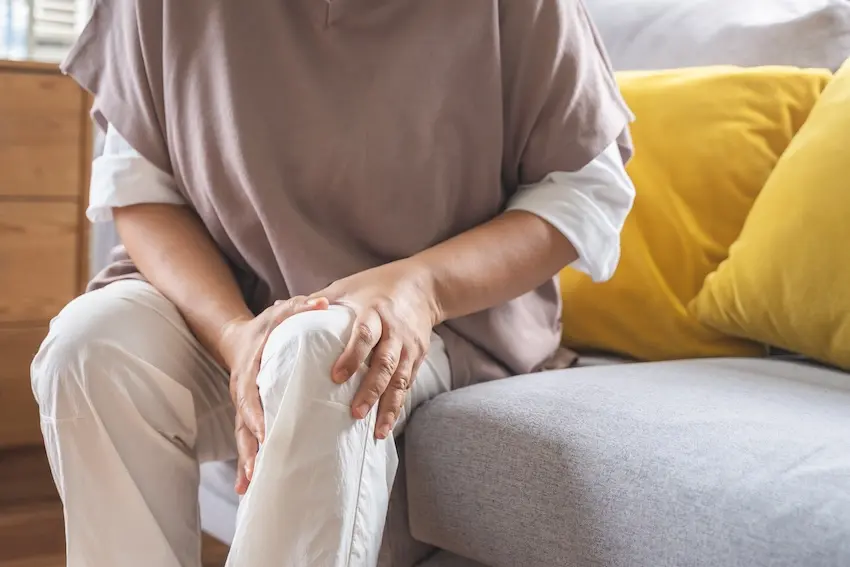
Conditions Our Doctors Treat That Cause Chronic Tightness
Through decades of experience treating over 50,000 metro Atlanta patients, our physicians have developed expertise in diagnosing and treating the conditions that create persistent muscle tightness and joint discomfort:
Muscle and Soft Tissue Conditions
Myofascial Pain Syndrome
Trigger points in muscle tissue create localized tightness and referred pain patterns. These hyperirritable spots maintain chronic tension and respond well to our trigger point injection therapy combined with manual release techniques.
Muscle Spasm and Guarding
Protective muscle contractions following injury or inflammation create persistent tightness. We address both the underlying pathology and the reactive muscle tension through interventional procedures and rehabilitation.
Fibromyalgia
Widespread muscle pain, stiffness, and tender points throughout the body. Our multidisciplinary approach combines medication management, physical therapy, and pain psychology for comprehensive symptom control.
Spine Conditions Creating Muscle Tension
Cervical and Lumbar Strain
Overuse, poor posture, or sudden movements strain spinal muscles creating persistent tightness and restricted movement. We provide targeted treatment to resolve inflammation and restore normal muscle function.
Facet Joint Dysfunction
Arthritic or inflamed spinal joints cause muscles to tighten protectively, creating stiffness and discomfort with rotation or extension. Our facet injections and medial branch blocks provide direct relief.
Degenerative Disc Disease
Disc breakdown alters spinal mechanics, causing compensatory muscle tightness as your body attempts to stabilize unstable segments. Our regenerative treatments address disc health while reducing secondary muscle tension.
Spinal Stenosis
Narrowed spinal canal creates nerve irritation that triggers protective muscle spasm and chronic tightness. We use epidural injections to reduce inflammation and allow muscles to relax.
Joint Conditions Causing Stiffness
Osteoarthritis
Cartilage degeneration in spine, hips, knees, or shoulders creates joint stiffness and compensatory muscle tightness. Our joint injections and regenerative therapies improve mobility and reduce surrounding muscle tension.
Adhesive Capsulitis (Frozen Shoulder)
Progressive shoulder stiffness and tightness severely restricts range of motion. We provide targeted shoulder injections and aggressive physical therapy to restore mobility.
SI Joint Dysfunction
Sacroiliac joint inflammation creates lower back and hip tightness with characteristic stiffness patterns. Our SI joint injections combined with stabilization exercises provide lasting relief.
Injury-Related Tightness
Whiplash and Auto Accident Trauma
Neck and shoulder tightness persisting after collision due to soft tissue injury and protective muscle guarding. We specialize in post-accident rehabilitation with comprehensive insurance coordination.
Repetitive Strain Injuries
Occupational or athletic overuse creates chronic muscle tension and tendon inflammation. Our work injury specialists develop return-to-activity protocols that prevent recurrence.
Post-Surgical Stiffness
Scar tissue formation and protective tension following surgery. We provide specialized rehabilitation to restore normal tissue mobility and reduce compensatory tightness patterns.
How Chronic Tightness Affects Your Daily Life
The impact of persistent muscle tension and joint stiffness extends far beyond physical discomfort. These symptoms create cascading effects across multiple life domains:
Sleep Disruption and Fatigue
Muscle tightness makes finding comfortable sleeping positions difficult. You might wake frequently to adjust position, preventing deep restorative sleep. Morning stiffness is often worse than evening discomfort, starting each day with reduced mobility. The resulting chronic fatigue compounds your perception of tightness and reduces your tolerance for normal activities.
Work Performance and Productivity
Desk workers experience progressively worsening neck and shoulder tightness as the day advances, reducing focus and increasing errors. Physical laborers find muscle rigidity limits their capacity for sustained exertion. Frequent breaks to stretch or change position interrupt workflow. Chronic discomfort creates mental distraction that affects cognitive performance regardless of your occupation.
Exercise and Activity Avoidance
Tight muscles and stiff joints discourage physical activity, creating a deconditioning cycle that worsens symptoms. You might abandon hobbies, sports, or fitness routines that once brought enjoyment. This avoidance leads to weight gain, cardiovascular decline, and further muscle weakness—all of which intensify the original tightness and discomfort.
Emotional and Psychological Impact
Living with constant physical tension creates mental stress. Irritability increases when your body never feels relaxed. Anxiety about symptom progression or future disability develops. Depression commonly accompanies chronic musculoskeletal discomfort, particularly when multiple treatments have failed to provide relief. The mind-body connection means psychological stress further increases muscle tension, creating a self-perpetuating cycle.
When Tightness Signals Something Serious
While most chronic tightness stems from musculoskeletal causes, certain patterns require urgent evaluation. Seek immediate medical attention if your tightness is accompanied by fever, unexplained weight loss, severe nighttime pain, progressive weakness, loss of bowel or bladder control, or numbness spreading into multiple limbs. These symptoms may indicate infection, tumor, or neurological emergency requiring different intervention.
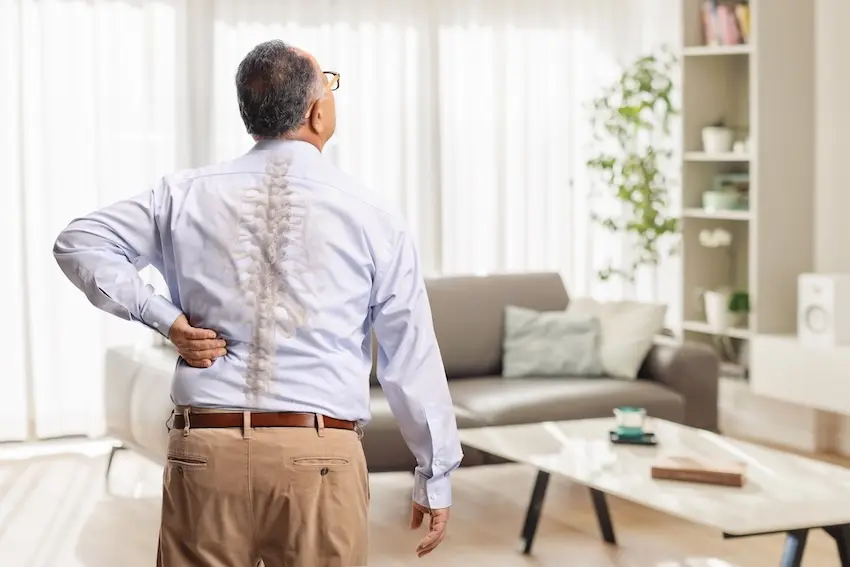
Our Comprehensive Diagnostic Approach
Effective treatment for tightness and discomfort begins with accurate diagnosis. Many patients have tried stretching, massage, or other therapies without lasting improvement because the underlying cause was never properly identified. At VeriSpine, our evaluation process uncovers the true source of your symptoms:
Detailed Symptom HistoryWe map your tightness patterns—when it started, what makes it better or worse, how it affects your daily activities, and what treatments you’ve already tried.
Physical ExaminationHands-on assessment of muscle tone, trigger point location, joint mobility, posture analysis, and movement patterns that contribute to chronic tension.
Range of Motion TestingMeasuring specific movement restrictions helps differentiate muscle tightness from joint stiffness and identifies compensatory patterns.
Muscle Palpation and Trigger Point MappingIdentifying exact locations of muscle knots, tender points, and referred pain patterns guides targeted treatment.
Diagnostic ImagingX-rays reveal arthritic changes and alignment issues. MRI shows disc problems, soft tissue abnormalities, and inflammatory conditions contributing to reactive muscle tension.
Functional Movement AssessmentObserving how you perform real-world activities reveals biomechanical dysfunction and movement compensation patterns maintaining chronic tightness.
This comprehensive evaluation distinguishes between primary muscle conditions (where tightness is the main problem) and secondary muscle tension (where tightness results from underlying spine or joint pathology). This distinction is critical because treatment strategies differ significantly based on the root cause.
Treatment Solutions That Provide Lasting Relief
VeriSpine’s multidisciplinary approach addresses both the symptoms of tightness and the underlying conditions perpetuating your discomfort. Our treatment protocols are evidence-based, minimally invasive, and tailored to your specific diagnosis:
Interventional Pain Management
Trigger Point Injections: Direct injection into muscle knots releases chronic tension, breaks pain-spasm cycles, and allows tissue to heal. Provides immediate relief for myofascial pain syndrome.
Facet Joint Injections: Reduces spinal joint inflammation that causes protective muscle guarding and tightness. Particularly effective for neck and back stiffness.
Epidural Steroid Injections: Decreases nerve root inflammation, allowing surrounding muscles to relax and restore normal movement patterns.
SI Joint Injections: Targets sacroiliac inflammation creating lower back and hip tightness.
Physical Therapy and Rehabilitation
Our specialized therapists don’t just teach stretches—they address the neuromuscular dysfunction maintaining your tightness. Treatment includes manual therapy to release fascial restrictions, specific exercises that retrain proper movement patterns, posture correction to reduce chronic strain, and neuromuscular re-education teaching your nervous system to release habitual tension.
Modalities like heat therapy, ultrasound, and electrical stimulation complement hands-on treatment. The goal is sustainable change: teaching your body new, healthier movement and tension patterns that persist after formal therapy ends.
Regenerative Medicine
For tightness stemming from degenerative conditions, our innovative stem cell treatments and platelet-rich plasma (PRP) therapy address underlying tissue damage. These regenerative approaches can improve joint health and disc integrity, reducing the mechanical dysfunction that triggers compensatory muscle tension.
Medication Management
Strategic use of muscle relaxants, anti-inflammatory medications, and when appropriate, neuropathic pain medications helps break acute flare-up cycles. We emphasize appropriate short-term use combined with rehabilitation rather than long-term pharmaceutical dependence.
Lifestyle and Ergonomic Optimization
Our team evaluates workplace ergonomics, sleep positions, and daily habits contributing to chronic tension. Targeted modifications—proper desk setup, supportive mattresses, activity pacing—prevent symptom recurrence and complement medical treatment.
Most patients achieve significant improvement through combinations of these therapies. We continually adjust your treatment plan based on response, ensuring you receive the most effective interventions for your specific condition.
Frequently Asked Questions About Tightness and Discomfort
Why does stretching only provide temporary relief from muscle tightness?
Stretching alone provides temporary relief because it addresses muscle length but not the underlying neurological patterns, trigger points, or structural problems causing chronic tension. Your nervous system maintains baseline muscle tone, and without addressing these control mechanisms, muscles return to their tight state within hours of stretching.
Effective treatment requires interrupting the pain-spasm cycle through interventions like trigger point injections, addressing joint dysfunction creating protective guarding, retraining movement patterns that perpetuate tension, and treating inflammatory conditions causing reactive muscle tightness. Stretching becomes much more effective when combined with these complementary treatments that address root causes. At VeriSpine, we identify why your muscles are tight—not just that they are—and develop treatment protocols that produce lasting change rather than temporary relief.
How long does it take to relieve chronic muscle tightness and joint stiffness?
Most patients experience noticeable improvement in muscle tightness within 2-4 weeks of beginning comprehensive treatment, with substantial relief achieved in 6-12 weeks, though timeline varies based on symptom duration, underlying pathology, and treatment compliance.
Acute tightness from recent strain often resolves within 2-3 weeks with appropriate intervention. Chronic tension present for months or years requires longer treatment because neurological patterns and tissue changes take time to reverse. Trigger point injections provide immediate relief but benefits accumulate with repeated sessions. Physical therapy effects build progressively as movement patterns improve. Patients with underlying arthritis or disc degeneration may experience ongoing management needs rather than complete resolution, but achieve significant functional improvement. Consistency matters—attending scheduled therapy sessions, performing home exercises, and following activity modifications accelerates recovery. Our experience shows patients who engage fully with treatment protocols achieve 60-80% symptom reduction within three months.
Can stress and anxiety cause real muscle tightness or is it psychological?
Yes, psychological stress creates genuine physiological muscle tightness through increased sympathetic nervous system activation, elevated cortisol, and unconscious muscle bracing patterns—the tightness is absolutely real and measurable, not “all in your head.”
The mind-body connection is well-established in medical literature. Chronic stress triggers persistent low-level muscle contraction, particularly in neck, shoulders, jaw, and back. This tension becomes habitual as your nervous system establishes these patterns as the new baseline. Stress also increases pain sensitivity, making existing tightness feel more severe. Additionally, anxiety often causes breath-holding and shallow breathing, which tightens chest and neck muscles. The tightness creates physical discomfort, which increases stress, creating a self-reinforcing cycle. Treatment requires addressing both physical and psychological components—trigger point injections release the physical tension while stress management techniques prevent recurrence. At VeriSpine, we recognize that effective treatment sometimes requires integrated approaches including pain psychology when stress is a significant contributing factor. Your symptoms are legitimate medical concerns deserving comprehensive treatment.
What’s the difference between muscle tightness and muscle spasm?
Muscle tightness is chronic, sustained contraction creating constant tension and restricted movement, while muscle spasm is sudden, intense, involuntary contraction causing acute cramping pain—though both involve unwanted muscle activation, they differ in onset, intensity, and duration.
Tightness develops gradually, persists continuously (though severity fluctuates), creates dull aching discomfort, and allows partial muscle function despite restriction. You can usually work through tightness, though movement feels limited and uncomfortable. Spasms occur suddenly, cause sharp severe pain, completely prevent muscle use during episodes, and typically resolve within minutes to hours. Spasms often result from acute injury, dehydration, electrolyte imbalance, or nerve irritation. Tightness stems from chronic conditions like myofascial pain, postural strain, or compensatory patterns from joint dysfunction. Treatment approaches differ: spasms respond to muscle relaxants, hydration, and rest, while chronic tightness requires trigger point therapy, movement retraining, and addressing underlying structural problems. However, persistent spasms can evolve into chronic tightness if the triggering condition isn’t resolved. Our diagnostic evaluation distinguishes between these presentations to guide appropriate intervention.
Will massage therapy cure chronic muscle tightness and discomfort?
Massage therapy provides valuable symptom relief and complements medical treatment but rarely cures chronic tightness alone when underlying structural problems, trigger points, or neurological dysfunction exist—it’s an important part of comprehensive care but typically insufficient as standalone treatment for persistent symptoms.
Therapeutic massage temporarily reduces muscle tension, improves circulation, releases adhesions, and provides pain relief lasting hours to days. However, if your tightness stems from facet joint arthritis, disc degeneration, or established trigger points, massage addresses symptoms without resolving the cause. The tightness returns as the underlying pathology remains active. Massage becomes much more effective when integrated with targeted medical interventions: following trigger point injections that deactivate muscle knots, after joint injections that reduce inflammatory causes of guarding, combined with physical therapy that corrects movement dysfunction, and alongside treatments addressing structural pathology. At VeriSpine, we view massage and manual therapy as valuable adjuncts within multidisciplinary treatment plans. Some patients benefit from ongoing maintenance massage after primary treatment resolves their condition. We help you understand what role massage should play in your specific situation and refer to qualified therapists when appropriate.
Does morning stiffness that improves with movement indicate arthritis?
Morning stiffness lasting 30-60+ minutes that gradually improves with movement is characteristic of inflammatory arthritis, while stiffness under 30 minutes typically indicates osteoarthritis or mechanical causes—though many conditions create morning stiffness, the duration and pattern help distinguish between inflammatory and non-inflammatory causes.
Inflammatory conditions like rheumatoid arthritis cause prolonged morning stiffness (often 1+ hours) because inflammatory chemicals accumulate in joints overnight. Movement pumps out inflammatory fluid, providing gradual improvement. Osteoarthritis creates shorter stiffness periods (typically 10-30 minutes) as thickened joint fluid redistributes with movement but inflammation plays a smaller role. Non-arthritic causes include myofascial pain (muscles stiffen during prolonged rest), disc problems (vertebral discs absorb fluid overnight, creating morning stiffness), and deconditioning (inactive tissues become stiff). Morning stiffness accompanied by joint swelling, symmetrical joint involvement, or systemic symptoms suggests inflammatory arthritis requiring rheumatological evaluation. Stiffness isolated to spine or specific joints with mechanical patterns (worse with activity later in day) suggests osteoarthritis or structural problems. Our diagnostic process includes detailed symptom pattern analysis, inflammatory marker testing when indicated, and imaging to differentiate these conditions and guide appropriate treatment.
Can poor posture permanently damage my spine and cause chronic tightness?
Prolonged poor posture accelerates degenerative changes in spine and joints, creates chronic muscle imbalances and tension patterns, but rarely causes irreversible damage—most posture-related problems are correctable with appropriate intervention, though earlier treatment produces better outcomes.
Forward head posture, rounded shoulders, and slouched sitting increase mechanical stress on cervical and thoracic spine structures, forcing certain muscles to work constantly while others weaken from disuse. Over years or decades, this creates disc degeneration, facet arthritis, and established neuromuscular patterns where muscles “forget” proper positioning. However, even long-standing postural dysfunction responds to treatment. Physical therapy retrains movement patterns, strengthens weakened muscles, and stretches chronically tight structures. Trigger point injections release established muscle knots. Ergonomic modifications prevent ongoing strain. Most patients achieve significant postural improvement regardless of age or symptom duration. The spine itself is remarkably resilient—while you can’t reverse established arthritis, you can halt progression, reduce symptoms dramatically, and restore functional movement. The key is addressing postural problems before they create secondary conditions or while secondary changes remain mild. Our evaluation identifies postural contributors to your tightness and develops correction strategies that produce lasting improvement.
Are trigger point injections painful and how quickly do they work?
Trigger point injections cause brief discomfort during needle insertion and a momentary cramping sensation as the muscle releases, but most patients tolerate the procedure well—relief often begins within 24-48 hours with maximal benefit developing over 5-7 days as inflammation resolves and muscle tissue heals.
The procedure involves inserting a small needle directly into muscle knots. You’ll feel the needle entry (similar to a vaccine), then a distinctive cramping or reproducing of your familiar discomfort as the trigger point is contacted. This recognition sensation—”that’s exactly where my pain is”—confirms accurate placement. The muscle may twitch involuntarily as it releases. Total discomfort lasts seconds per injection site. We typically treat multiple trigger points in one session. Post-procedure soreness resembles post-workout muscle ache, lasting 1-2 days. Ice application and gentle movement minimize this. Many patients notice immediate loosening of tight muscles, but full relief develops progressively. The injection breaks the pain-spasm cycle, allowing blood flow to return and healing to occur. Some patients achieve lasting relief from a single session. Others with chronic, long-standing trigger points benefit from a series of 2-4 sessions spaced 1-2 weeks apart. Response depends on symptom duration and presence of underlying conditions perpetuating trigger point formation. At VeriSpine, we explain what to expect beforehand and ensure you’re comfortable throughout the procedure.
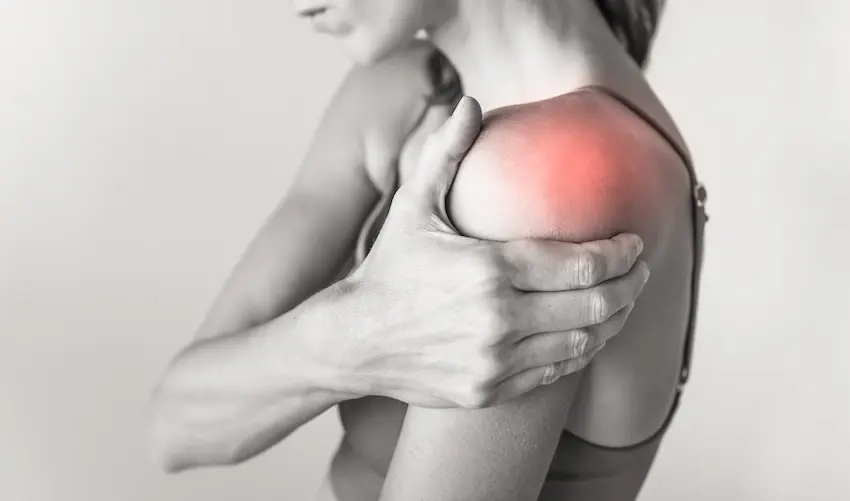
Why Choose VeriSpine for Tightness and Discomfort Treatment
- 30+ Years Treating Chronic Tightness
- 50,000+ Patients Successfully Treated
- 12+ Treatment Procedures Available
- 60+ Years Combined Provider Experience
Our metro Atlanta practice has built its reputation on solving persistent musculoskeletal problems that other providers couldn’t resolve. We don’t offer quick fixes or temporary relief—we identify root causes and develop comprehensive treatment protocols that produce lasting change. Our multidisciplinary team includes physicians specializing in interventional pain management, physical therapists expert in manual techniques and movement retraining, and support staff dedicated to coordinating your care seamlessly.
We understand that living with chronic tightness and discomfort isn’t just uncomfortable—it’s exhausting, frustrating, and limiting. You deserve providers who take your symptoms seriously, investigate thoroughly, and persist until we find solutions that work for your specific situation.
Find Relief from Chronic Tightness and Discomfort
You don’t have to accept persistent muscle tension and joint stiffness as your new normal. Our specialized team has helped thousands of metro Atlanta patients break free from chronic tightness through accurate diagnosis and targeted treatment.
Discover the VeriSpine difference—where we look beyond symptoms to identify and treat the root causes of your discomfort.

